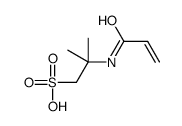Novel polymer blends for the preparation of membranes for biohybrid liver systems.
Aneliya Kostadinova, Barbara Seifert, Wolfgang Albrecht, Guenter Malsch, Thomas Groth, Andreas Lendlein, George Altankov
Index: J. Biomater. Sci. Polym. Ed. 20(5-6) , 821-39, (2009)
Full Text: HTML
Abstract
It was found previously that membranes based on co-polymers of acrylonitrile (AN) and 2-acrylamido-2-methyl-propansulfonic acid (AMPS) greatly stimulated the functionality and survival of primary hepatocytes. In those studies, however, the pure AN-AMPS co-polymer had poor membrane-forming properties, resulting in quite dense rubber-like membranes. Hence, membranes with required permeability and optimal biocompatibility were obtained by blending the AN-AMPS co-polymer with poly(acrylonitrile) homopolymer (PAN). The amount of PAN (P) and AN-AMPS (A) in the blend was varied from pure PAN (P/A-100/0) over P/A-75/25 and P/A-50/50 to pure AN-AMPS co-polymer (P/A-0/100). A gradual decrease of molecular cut-off of membranes with increase of AMPS concentration was found, which allows tailoring membrane permeability as necessary. C3A hepatoblastoma cells were applied as a widely accepted cellular model for assessment of hepatocyte behaviour by attachment, viability, growth and metabolic activity. It was found that the blend P/A-50/50, which possessed an optimal permeability for biohybrid liver systems, supported also the attachment, growth and function of C3A cells in terms of fibronectin synthesis and P-450 isoenzyme activity. Hence, blend membranes based on a one to one mixture of PAN and AN-AMPS combine sufficient permeability with the desired cellular compatibility for application in bioreactors for liver replacement.
Related Compounds
| Structure | Name/CAS No. | Molecular Formula | Articles |
|---|---|---|---|
 |
poly(2-acrylamido-2-methyl-1-propanesulfonic acid)
CAS:27119-07-9 |
C7H13NO4S |
|
PAA-PAMPS copolymers as an efficient tool to control CaCO3 s...
2013-03-05 [Langmuir 29(9) , 3080-8, (2013)] |
|
Dielectric properties of micellar aggregates due to the self...
2011-03-17 [J. Phys. Chem. B 115(10) , 2196-204, (2011)] |
|
Anti-angiogenic activity of heparin-like polysulfonated poly...
2010-11-01 [Biomaterials 31(31) , 7863-72, (2010)] |
|
Hyaluronic acid affects the in vitro induction effects of sy...
2013-01-01 [BMC Musculoskelet. Disord. 14 , 56, (2013)] |
|
Surface sliding friction of negatively charged polyelectroly...
2007-04-15 [Colloids Surf. B Biointerfaces 56(1-2) , 296-302, (2007)] |